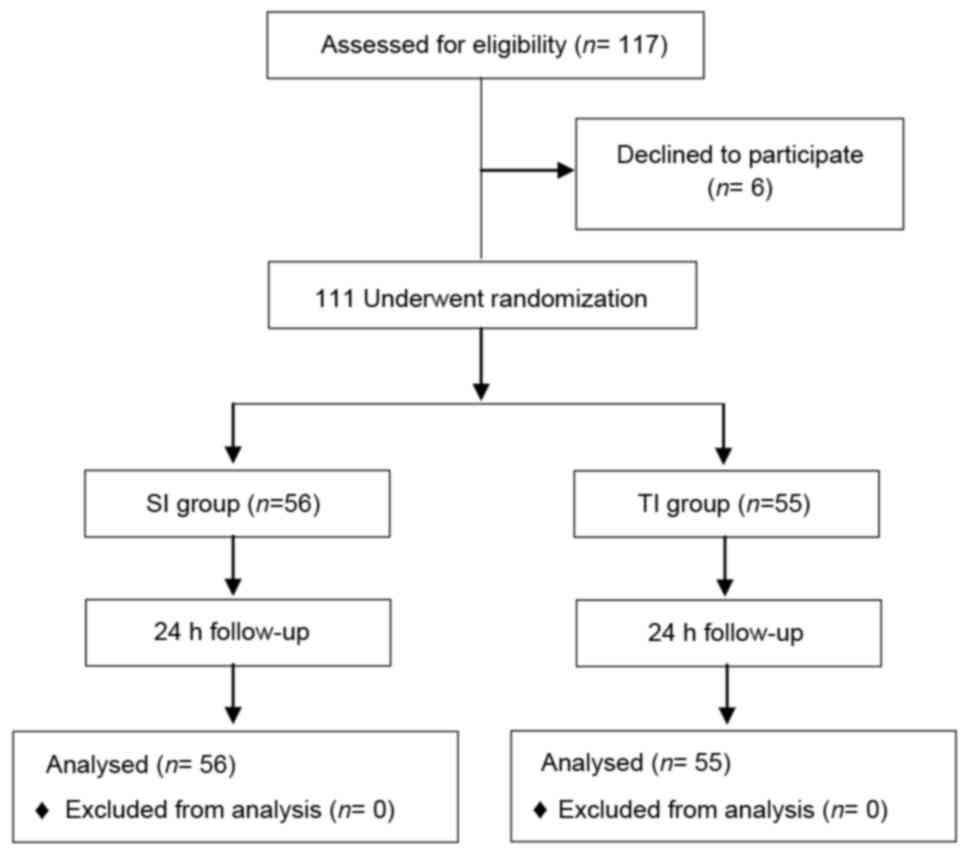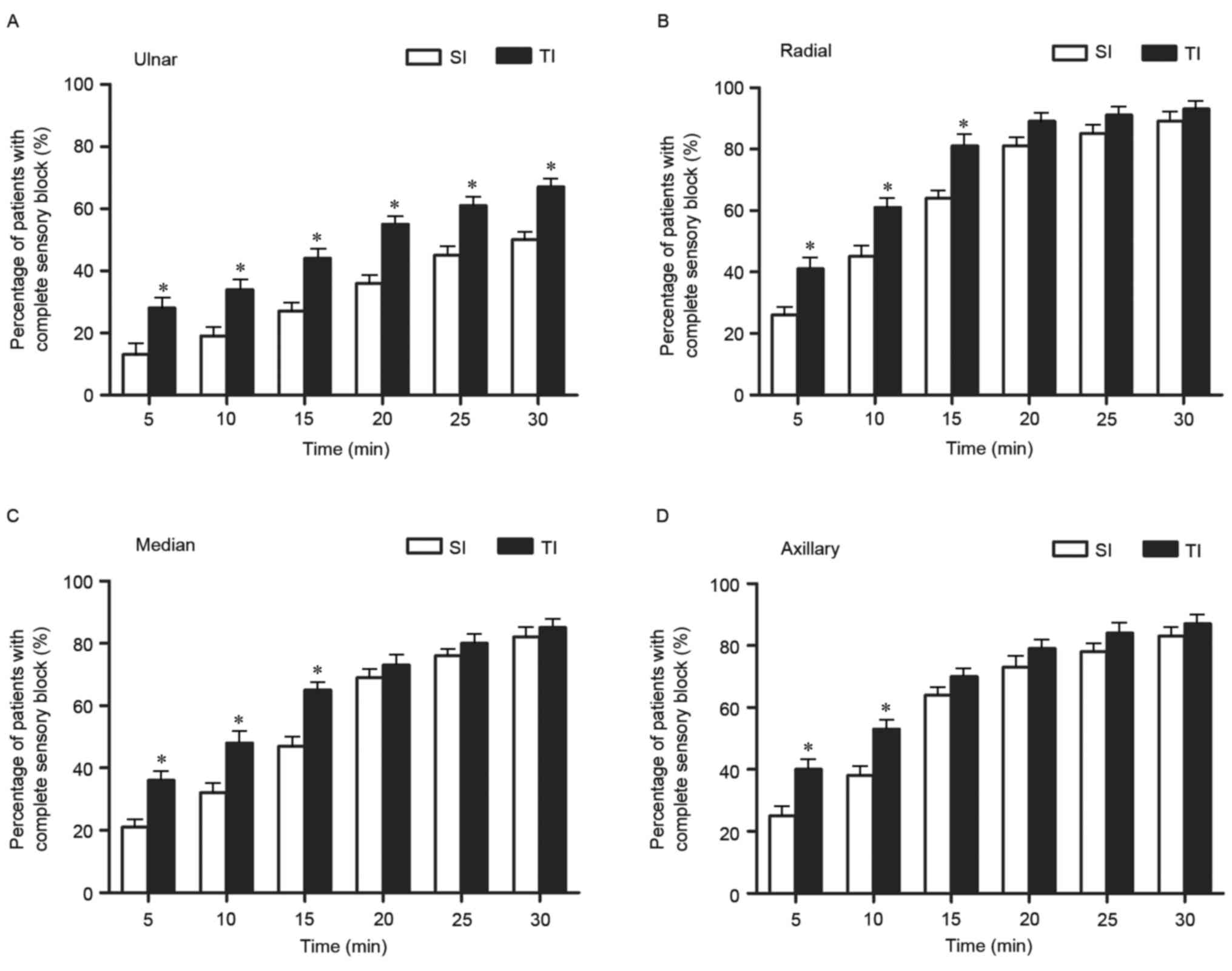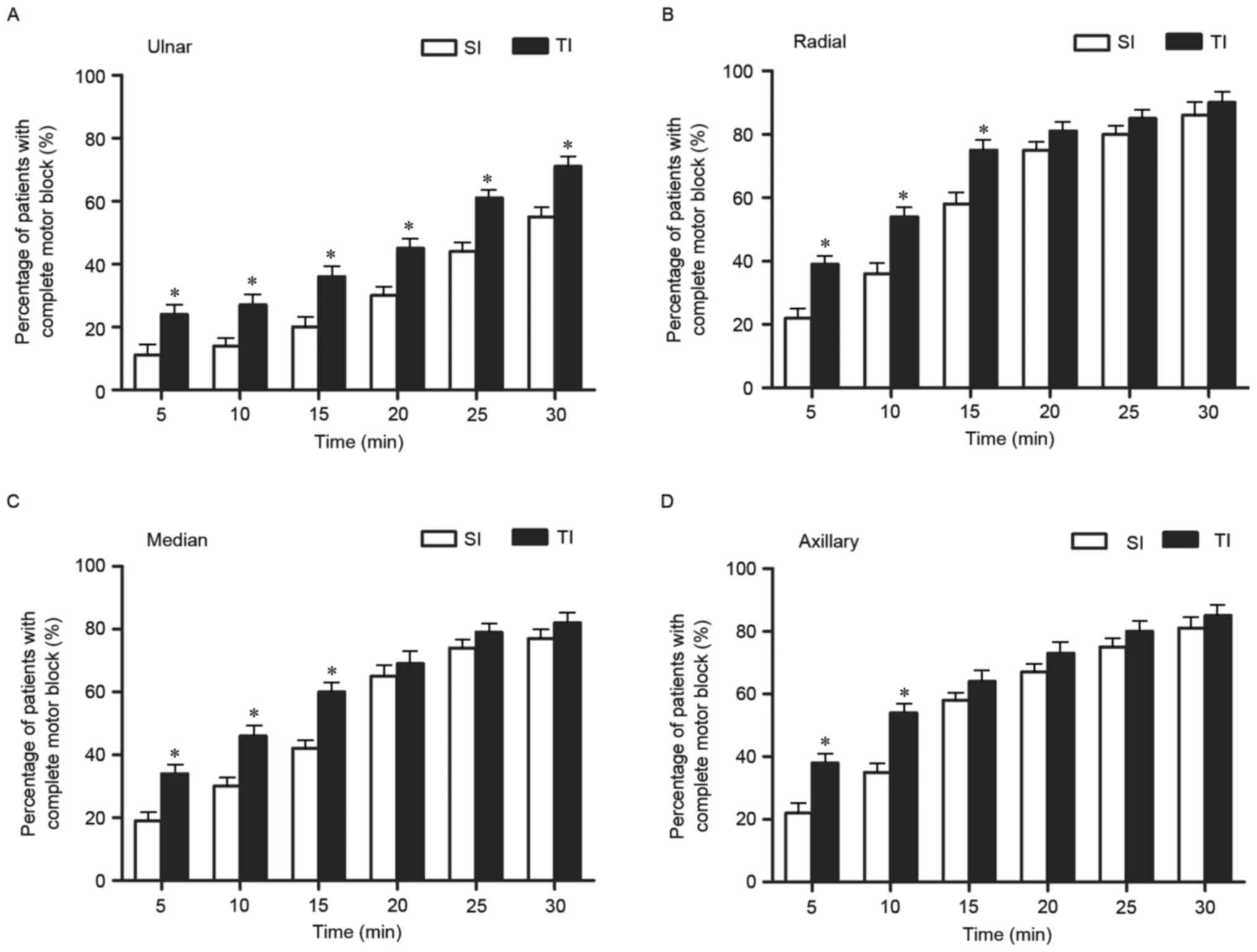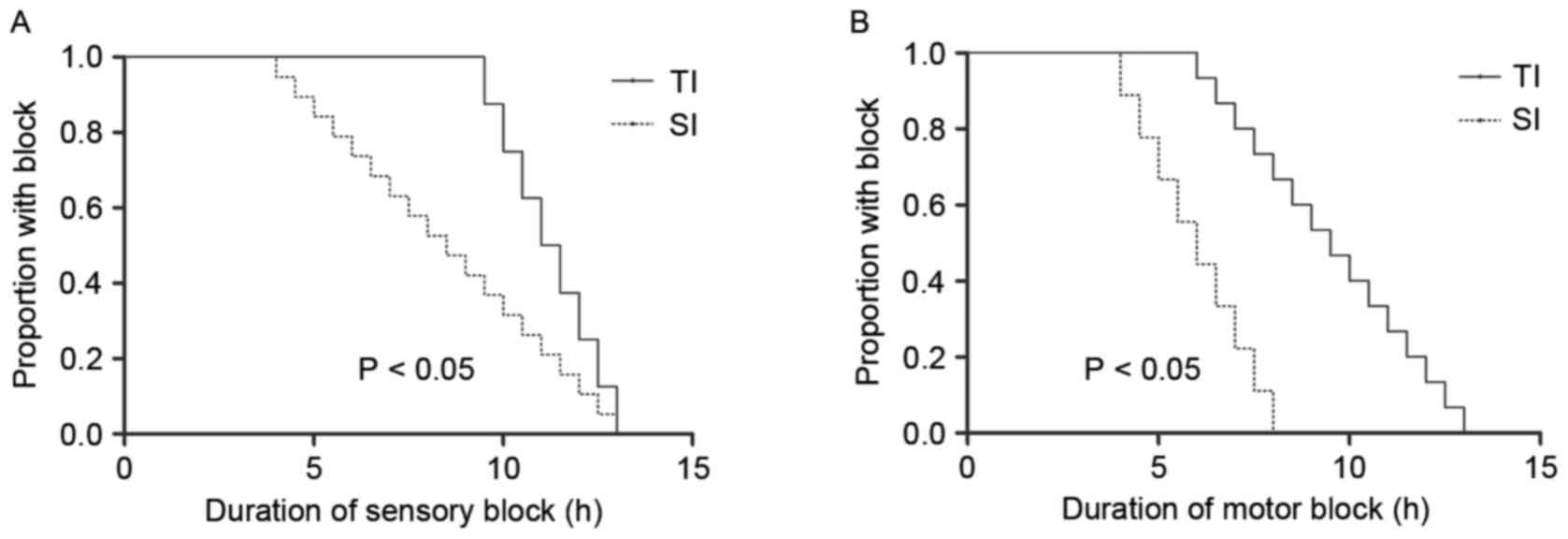|
1
|
Desmet M, Vanneste B, Reynvoet M, Van
Cauwelaert J, Verhelst L, Pottel H, Missant C and Van de Velde M: A
randomised controlled trial of intravenous dexamethasone combined
with interscalene brachial plexus blockade for shoulder surgery.
Anaesthesia. 70:1180–1185. 2015. View Article : Google Scholar : PubMed/NCBI
|
|
2
|
Fritsch G, Danninger T, Allerberger K,
Tsodikov A, Felder TK, Kapeller M, Gerner P and Brummett CM:
Dexmedetomidine added to ropivacaine extends the duration of
interscalene brachial plexus blocks for elective shoulder surgery
when compared with ropivacaine alone: A single-center, prospective,
triple-blind, randomized controlled trial. Reg Anesth Pain Med.
39:37–47. 2014. View Article : Google Scholar : PubMed/NCBI
|
|
3
|
Woo JH, Kim YJ, Kim DY and Cho S:
Dose-dependency of dexamethasone on the analgesic effect of
interscalene block for arthroscopic shoulder surgery using
ropivacaine 0.5%: A randomised controlled trial. Eur J
Anaesthesiol. 32:650–655. 2015. View Article : Google Scholar : PubMed/NCBI
|
|
4
|
Tsui BC and Lou L: Learning the
‘traceback’ approach for interscalene block. Anaesthesia. 69:83–85.
2014. View Article : Google Scholar : PubMed/NCBI
|
|
5
|
Danelli G, Bonarelli S, Tognu A, Tognú A,
Ghisi D, Fanelli A, Biondini S, Moschini E and Fanelli G:
Prospective randomized comparison of ultrasound-guided and
neurostimulation techniques for continuous interscalene brachial
plexus block in patients undergoing coracoacromial ligament repair.
Br J Anaesth. 108:1006–1010. 2012. View Article : Google Scholar : PubMed/NCBI
|
|
6
|
Bowens C Jr, Gupta RK, O'Byrne WT,
Schildcrout JS, Shi Y, Hawkins JJ, Michaels DR and Berry JM:
Selective local anesthetic placement using ultrasound guidance and
neurostimulation for infraclavicular brachial plexus block. Anesth
Analg. 110:1480–1485. 2010. View Article : Google Scholar : PubMed/NCBI
|
|
7
|
Arab SA, Alharbi MK, Nada EM, Alrefai DA
and Mowafi HA: Ultrasound-guided supraclavicular brachial plexus
block: Single versus triple injection technique for upper limb
arteriovenous access surgery. Anesth Analg. 118:1120–1125. 2014.
View Article : Google Scholar : PubMed/NCBI
|
|
8
|
Tiyaprasertkul W, Bernucci F, González AP,
Leurcharusmee P, Yazer MS, Techasuk W, Arnuntasupakul V, de la
Garza DC, Finlayson RJ and Tran DQ: A Randomized comparison between
single- and triple-injection subparaneural popliteal sciatic nerve
block. Reg Anesth Pain Med. 40:315–320. 2015. View Article : Google Scholar : PubMed/NCBI
|
|
9
|
Yamamoto H, Sakura S, Wada M and Shido A:
A prospective, randomized comparison between single- and
multiple-injection techniques for ultrasound-guided subgluteal
sciatic nerve block. Anesth Analg. 119:1442–1448. 2014. View Article : Google Scholar : PubMed/NCBI
|
|
10
|
Spence BC, Beach ML, Gallagher JD and
Sites BD: Ultrasound-guided interscalene blocks: Understanding
where to inject the local anaesthetic. Anaesthesia. 66:509–514.
2011. View Article : Google Scholar : PubMed/NCBI
|
|
11
|
Kapral S, Krafft P, Eibenberger K,
Fitzgerald R, Gosch M and Weinstabl C: Ultrasound-guided
supraclavicular approach for regional anesthesia of the brachial
plexus. Anesth Analg. 78:507–513. 1994. View Article : Google Scholar : PubMed/NCBI
|
|
12
|
Franco CD, Rahman A, Voronov G, Kerns JM,
Beck RJ and Buckenmaier CC III: Gross anatomy of the brachial
plexus sheath in human cadavers. Reg Anesth Pain Med. 33:64–69.
2008. View Article : Google Scholar : PubMed/NCBI
|
|
13
|
Bloc S, Rontes O, Mercadal L and Delbos A:
Low approach to interscalene brachial plexus block: Safer under
ultrasound guidance. Anesth Analg. 113:1282–1283. 2011. View Article : Google Scholar : PubMed/NCBI
|
|
14
|
Kim JH, Chen J, Bennett H, Lesser JB,
Resta-Flarer F, Barczewska-Hillel A, Byrnes P and Santos AC: A low
approach to interscalene brachial plexus block results in more
distal spread of sensory-motor coverage compared to the
conventional approach. Anesth Analg. 112:987–989. 2011. View Article : Google Scholar : PubMed/NCBI
|
|
15
|
Fredrickson MJ, Wolstencroft P, Kejriwal
R, Yoon A, Boland MR and Chinchanwala S: Single versus triple
injection ultrasound-guided infraclavicular block: Confirmation of
the effectiveness of the single injection technique. Anesth Analg.
111:1325–1327. 2010. View Article : Google Scholar : PubMed/NCBI
|
|
16
|
Tran DQ, Bertini P, Zaouter C, Muñoz L and
Finlayson RJ: A prospective, randomized comparison between single-
and double-injection ultrasound-guided infraclavicular brachial
plexus block. Reg Anesth Pain Med. 35:16–21. 2010. View Article : Google Scholar : PubMed/NCBI
|















